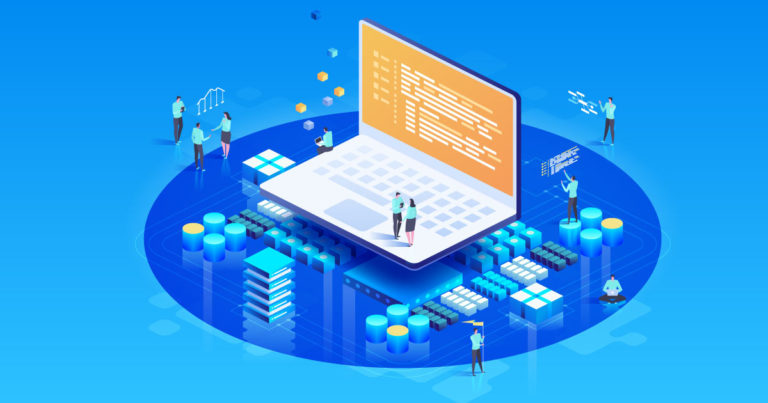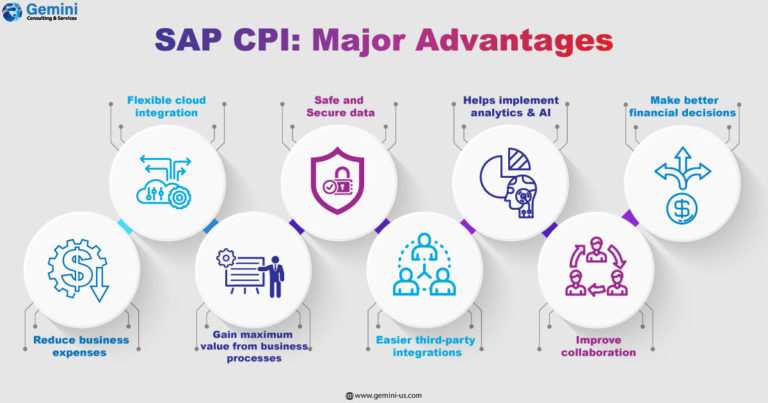Enterprises must act swiftly to seamlessly adapt to shifting market demands without disrupting operations. It also requires business procedures and divisions to work in tandem through cross-departmental system integration. However, it is not easy to monitor everything at the same time. Data collection, teamwork, and process automation are a few functions that demand greater care and attention.
Each business is unique, and complex with varying business requirements to fulfill. Let us also remember that using a single platform or website cannot help handling these challenges efficiently. Using multiple unreliable third-party tools can be tempting but these solutions come with security concerns and business risks.

How SAP Can Help?
SAP is a business-focused platform, and it features multiple apps that can help handle various business needs of an organization. With the release of different cloud-based solutions, SAP Cloud Integration (CI) became popular among growing businesses. SAP CI comes with an intuitive design and is based in the cloud that gets improved with new features and enhancements all year long. Developers can easily finish integration with its user-friendly interface and pre-made content created as per SAP standards.
Cloud Strategy of SAP
SAP PI/PO is an on-premise middleware solution used extensively for different integration scenarios owing to its robust functionality, user-friendly interface, and developer community support. Given the fast growth of cloud technology and businesses rethinking their middleware strategy, migrating to a cloud integration platform makes sense.
SAP, therefore, introduced its cloud-first product strategy, SAP Cloud Platform Integration (CPI). SAP CPI enables connection between on-premise and cloud-based SAP applications with other SAP and third-party apps in a seamless manner. It does this by using pre-packaged content and a rich set of adapters and APIs. This unites disparate data and systems across the IT landscape of a business thereby streamlining business processes and delivering connected digital experiences. It enhances the efficiency of integration.
SAP CPI is powered by the SAP HANA platform that offers capabilities of quick and seamless connection with the existing SAP environment to other SAP and non-SAP enterprise software, that too without extensive coding. SAP provides integration flows to integrate master and transactional data with its pre-packaged content. The tech provider also offers connectivity support for IDOCs by connecting on-premise SAP CRM and SAP ERP systems and SOAP over HTTPs by connecting to the cloud for customer scenarios.
Like every other management-based tool, SAP CPI can help data exchange in a real-time format and message processing within a specific department, an organization, or between different companies. All this aids in complete data synchronization which in turn can streamline a company’s processes and operations.
Enterprises can modernize their integration landscape and become agile, innovative, and future-ready by migrating their traditional middleware to SAP CPI. However, enterprises need a reliable partner to handhold them in their migration journey to SAP CPI. Gemini Consulting & Series can help simplify your migration. Contact us to help you sail through this process easily.
When Does SAP CPI Come into Play?
- When the focus is entirely on leveraging the potential of the cloud and integrating cloud technology into the system.
- When the primary system infrastructure lies in the cloud.
- When an enterprise considers using a subscription-free model.
- When the compulsion to use an inexpensive on-premise middleware.
- If the business is yet to obtain SAP data services on-premise or SAP PI.
- The need for faster innovation-related architectural benefits provided by SAP CPI.

Enterprises can reduce their business expenses with SAP CPI as it requires minimal upfront investment. It also offers low-paid subscription models.- Extensive coding knowledge is not required to operate the SAP CPI. A person with a basic understanding of coding can work on SAP CPI.
- SAP Cloud Integration is very flexible. Hence it can easily adapt to any organizational structure and can be easily used with almost any kind of cloud solution.
- SAP CPI Business Technology Platform (BTP) can easily bridge gaps in the data-sharing architecture between businesses. It is hence possible to obtain maximum value from all business processes. Additionally, SAP offers pre-packaged content that reduces development time.
- The SAP CPI certification allows businesses to safely reveal the plans and methodology of a business. This, in turn, can plan, strategize, and share the same across resources.
- SAP Cloud Platform Integration actively helps implement analytics, administration, and AI in the organization with much more flexibility. This improves operational efficiency, helps discover insights, and delivers better performance.
- The SAP integration solutions are hosted in specific data centers around the world, removing the necessity to worry about technical monitoring, scalability, or security. Business data is guaranteed to be safe and secure.
- SAP accommodates third-party integrations, providing pre-built connectors for more than a hundred non-SAP applications and custom extensions.
- With SAP CPI, it is easy to collaborate with another partner from a single platform. It works well between different businesses and organizations.
- Apart from organizational information, SAP CPI can provide guidance on making better financial decisions and gain a lot more ROI quickly. It also helps with data governance efforts.
SAP CPI can offer greater advantages to enterprises compared to SAP Process Integration/Orchestration.
SAP CPI helps accelerate cloud-to-cloud and cloud-to-on-premise integrations cost-effectively using over 2600 pre-built integration scenarios, 2500 ready-to-use APIs, and more than connectors available in the SAP API Business Hub. SAP PI/PO does not have pre-packaged integration content. This makes SAP PI/PO less efficient than SAP CPI while doing rapid integration efforts.
SAP CPI supports real-time integrations across distributed application landscapes using features like SAP Event Mesh and SAP API Management. This is absent in SAP PI/PO.
Being a cloud-based platform, it is easier to monitor, maintain, and deploy SAP CPI whereas SAP PI/PO is deployed on-premise. With SAP CPI, there is no hassle of handling repetitive hardware revamp cycles and expensive maintenance renewal charges that occur with on-premise middleware.
There are flexible pricing models, such as Cloud Platform Enterprise Agreement (CPEA) and Pay as You Go (PAYG), to suit various business needs. SAP CPI allows businesses to quickly get started with minimal investment. It does not require any long-term financial commitments, unlike SAP PI/PO.
SAP CPI serves as the underlying integration technology for all SAP Line of Business (LoB) applications and helps form a solid ground for the digital transformation of businesses. Customers using SAP PI/PO 7.5 need to migrate to SAP CPI after 2027 as SAP’s support for PO 7.5 is available till then.



